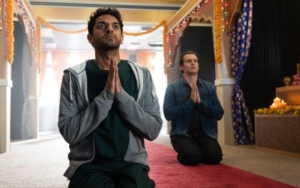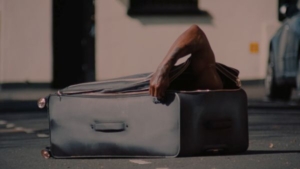
Why is the United States constantly in thrall to the National Rifle Association? For more than 40 years, this organization has been the defining obstacle to combatting a rise of gun violence, even rejecting initiatives with wide-spread public support, all in the name of ill-defined “freedom,” as embodied by gun ownership. It’s a baffling sentiment, but as Judd Ehrlich’s inquisitive documentary The Price of Freedom reveals, hardly one emerging from left field. Instead, its dominance over American politics was a slow-burning grassroots power grab built from a combination of lobbying efforts and racist sentiments, effectively laying the foundation for today’s culture war–obsessed Republican party.
Featuring interviews with influential gun debate figures like President Bill Clinton, Congresswoman Lucy McBath, Parkland student X González, and former NRA president David Keene, The Price of Freedom paints a time line as morbid as it is ironic. The Old West, contrary to Hollywood interpretations, was full of rules and regulations about who could own firearms or bring them into buildings, even if some laws were also designed to disenfranchise Black Americans from protecting themselves against white violence.
This is where the NRA began in 1871: an organization designed to teach people shooting skills. However, with the rise of 1960s counterculture politics and the civil rights movement, its predominantly white membership became nervous, as gun control became a fallout of numerous assassinations. Hence the Gun Control Act of 1968: a bulwark legislation designed to protect citizens against gun violence, but one that some NRA members viewed as an attack on them personally.
Enter Harlon Carter, a former Border Patrol chief who laid the blueprints for the organization’s future rhetoric. A fervent believer in the Second Amendment, Carter helped vote out the NRA old guard out in 1977 in what can only be described as an organizational coup. Guns became a single-issue voter quantity, tarnishing formally safe politicians and turning Ronald Reagan—a literal former Hollywood cowboy—into the organization’s first White House avatar.
You can see how a process of lobbying, propaganda, and fear tactics evolved into the mess we have today. The NRA spearheaded the backlash to Bill Clinton’s Federal Assault Weapons Ban, which helped lead to the Republican takeover of Congress in 1994. It openly encouraged and promoted sales of assault rifles and the loosening of restrictions on gun purchases and took Stand Your Ground laws nationwide, all while the organization got richer.
Of course, there were consequences. Some of the documentary’s most difficult scenes come from McBath, whose son was a victim of Stand Your Ground laws, and Nicole Hockley, whose child was killed in the Sandy Hook shooting, as they discuss feeling helpless in the face of this organization’s casual indifference to their suffering. When forced to pick between protecting children or guns, the NRA effortlessly painted themselves and their members as the true victims.
In interviews with Keene, we see a man who views everything he’s done for the NRA as part of a noble crusade defending gun owners against malicious liberal intent. Without much shame, he also admits to the financial benefits it receives from its supporters, stating that the NRA is “key to the survival of American firearm manufactures, rather than the other way around.” It’s no wonder that the organization fell head over heels for Donald Trump, whose rhetoric and attitude was its culture war spoken 24/7, in which “freedom” paradoxically means embracing extremism in the name of championing America.
The Price of Freedom hardly covers groundbreaking material, with its most recent material being coverage of the post-Parkland shooting protests that put the NRA on the defensive. Rather, it seeks to examine how this, to borrow its leader Wayne LaPierre’s terminology, “slippery slope” of coordinated events and co-opted patriotic terms allowed it to retain power and influence for so long, regardless of public opinion. Perhaps, in watching how the NRA got its start, viewers can understand its organizational tactics to counter its power. That would certainly be an ironic way for it to bite the bullet.
The Price of Freedom will be released in theaters and available via virtual cinemas on July 7, 2021.
















Leave A Comment